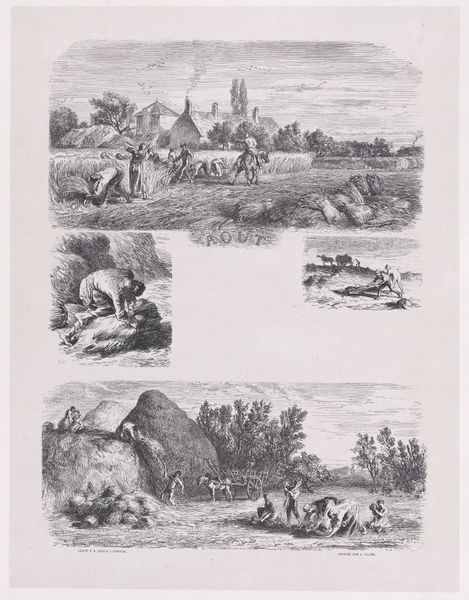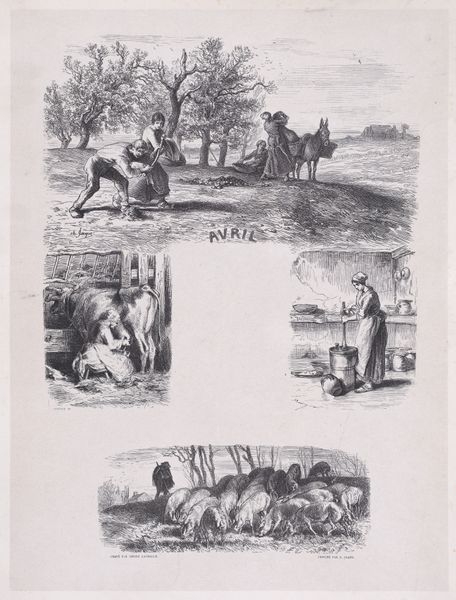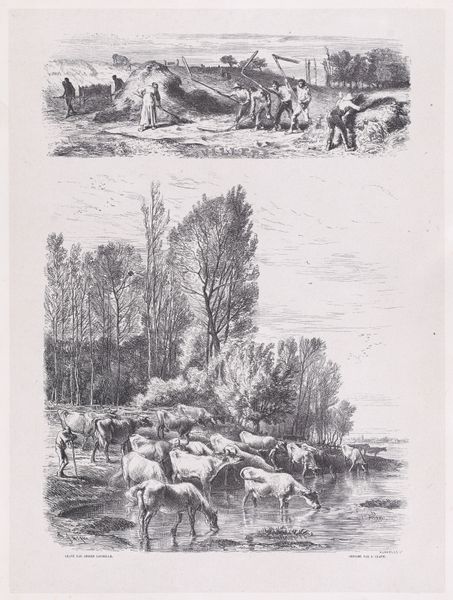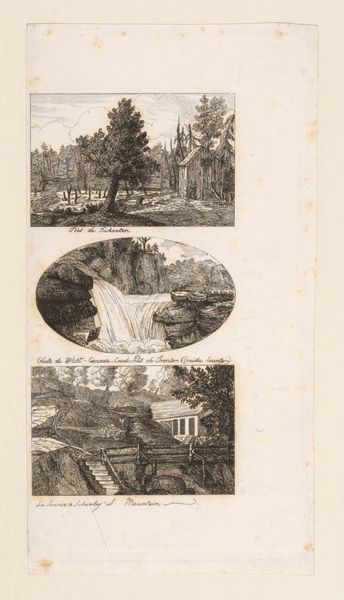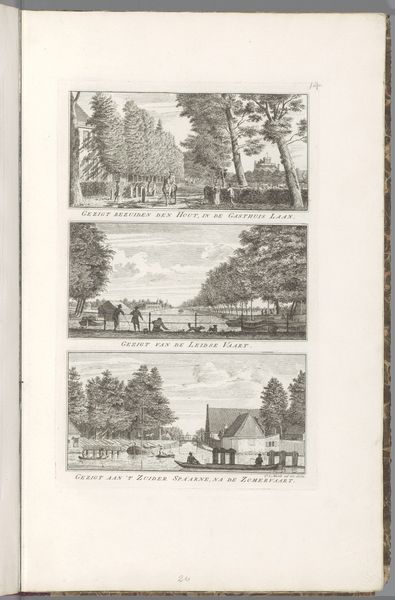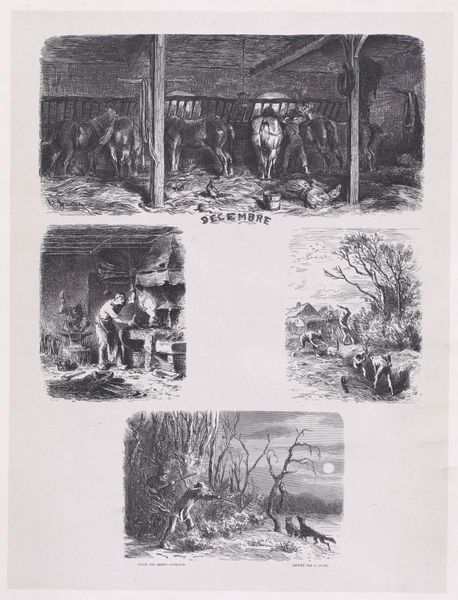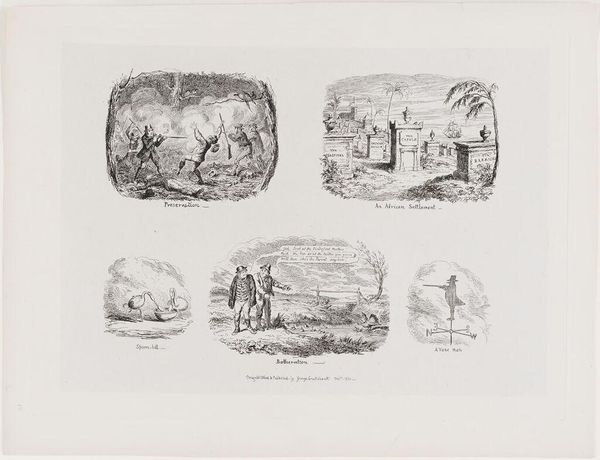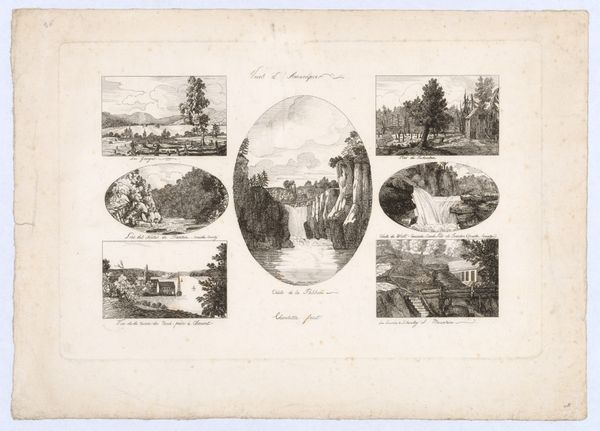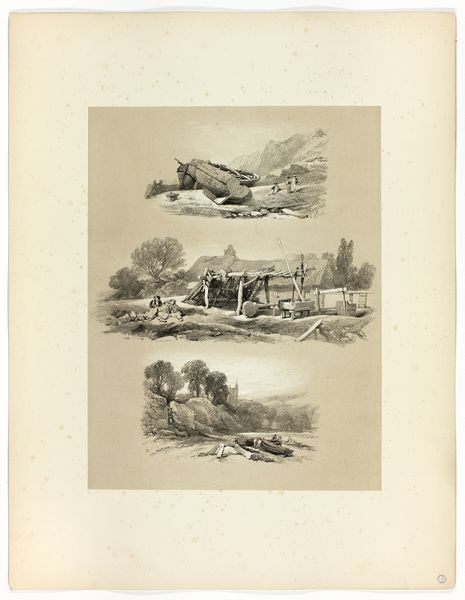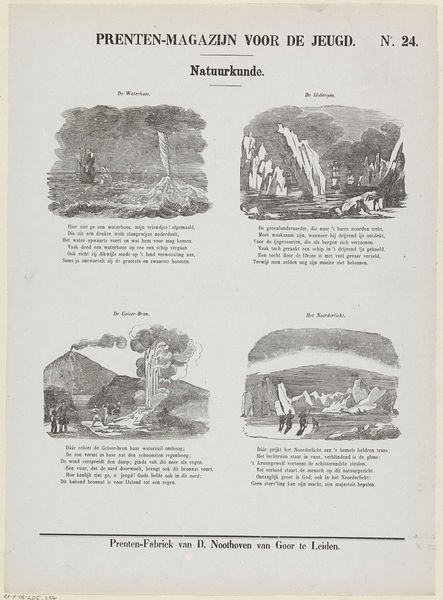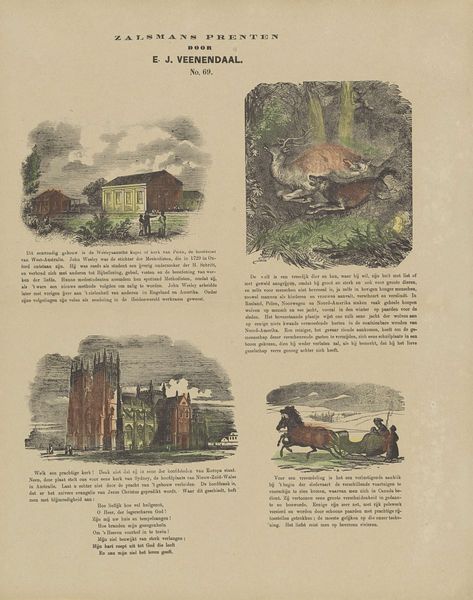
Dimensions: Sheet: 14 5/16 × 10 3/4 in. (36.3 × 27.3 cm)
Copyright: Public Domain
Curator: Let’s spend a moment with "February," an etching from Charles Jacque's "Album of Rustic Subjects," created in 1859. It's part of the Met's collection here in New York. What's your initial impression? Editor: Stark. I mean, immediately I feel a cold, grayness in this print, despite the little scenes of activity, this sense of rural existence reduced to its bones. Curator: Absolutely. I think Jacque beautifully captures that feeling of February—the tail end of winter where everything is hushed and waiting. Looking at it, I can almost feel the brittle cold of the air, see the pale light filtering through those bare trees. And I find myself reflecting on how closely people once lived with the seasons. Editor: He’s certainly telegraphing that idea of harsh realities—especially when you consider the etching process itself. So many hands involved! From the harvesting of raw materials for the paper and inks to the skilled labor needed to manipulate metal. Even if this image purports a sort of naturalistic depiction, it only gets to us through tremendous amounts of highly orchestrated industry. Curator: You know, when I look closer, it is interesting to consider the means of its production alongside the "rustic" themes he portrays. Perhaps it's intended to evoke the romanticism of a simpler existence, the dream of connection to land. Jacque, trained as an engraver, eventually turned to painting rural life; there's something so appealing about the return to pastoral scenes after industrialization. Editor: And that division between a kind of elite artisanal labor against the representation of the poor shepherd speaks volumes. Who buys these prints? Who does it benefit that they exist and circulate? He wasn't naive: his prints are deeply imbricated within structures of class. Curator: It brings to mind how idealized so much art around rural life was during this period, but it’s also impossible to not see, even in Jacque's composition, this longing to understand the beauty that can exist in the everyday. To see how individuals shape and are shaped by the world around them, even as forces much larger operate in their life. It seems less political than a rumination on temporality. Editor: Still, seeing his rendering now prompts me to reconsider where our own contemporary materials originate from—it exposes a continuous cycle. Jacque may portray shepherds by the fire, but his image materializes within our own matrix of production, consumption, and obsolescence.
Comments
No comments
Be the first to comment and join the conversation on the ultimate creative platform.
